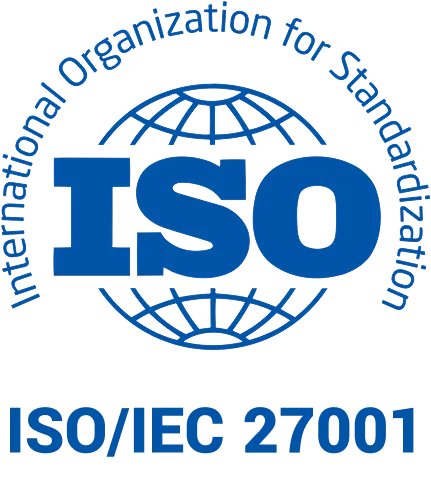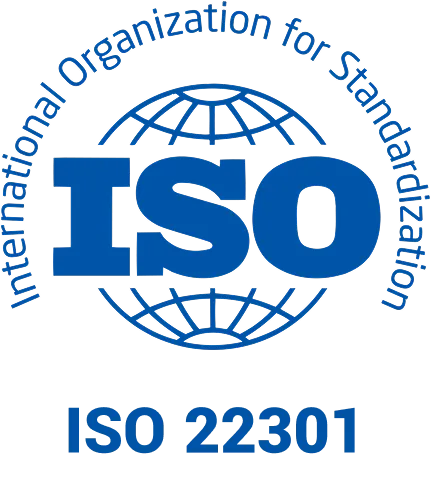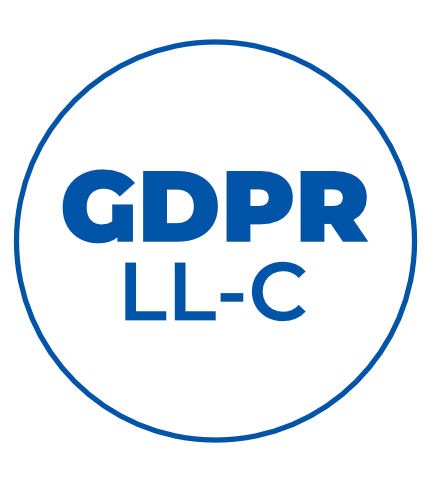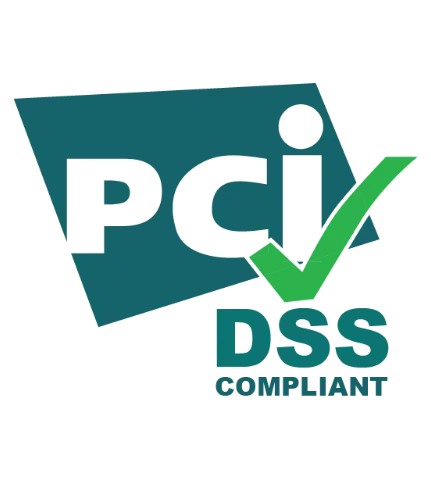
HR Cost Savings: Strategies for Reducing Costs and Boosting Efficiency in People Operations
HR cost savings go beyond simple expense reduction—they represent a strategic approach to human capital management that combines automation, analytics, and workforce development to achieve sustainable business benefits. According to Deloitte research, optimizing HR costs remains a top priority for most organizations, with 69% of companies focusing on targeted cost-reduction initiatives across specific departments and functions.
Digitalization and Automation as the Foundation for Savings
Digitalization of HR Operations as a Cost Reduction Tool
Digitalization of HR processes forms the foundation of modern people management, enabling organizations to realize significant savings through paperless operations, reduced administrative time, and error minimization. Personnel-related costs typically represent 20-40% of total operating expenses, making them a priority area for optimization. HR digitalization isn't about short-term cuts but rather sustained transformation encompassing organizational structure simplification, workforce planning, and competency management.
The Nais platform offers comprehensive HR digitalization solutions that enable automation of critical people processes, from recruitment through workforce management. According to Deloitte research, employees using AI at work report 63% higher task efficiency. The tool available at oszczednoscihr.pl provides preliminary calculations of potential savings from HR process automation.
HR Process Automation and Its Impact on Administrative Efficiency
HR automation represents a key strategy enabling organizations to move from siloed cost management to a holistic operational approach. Traditional HR operations focused on cost reduction through enterprise technology implementation, offshore labor arbitrage, or outsourcing. Modern organizations must strive for more than "same results, cheaper"—singular focus on cost reduction leads to innovation stagnation, growing complexity, and lost transformation potential.
Key automation areas include: time and attendance tracking, leave request processing, absence management, and onboarding. Modern HR platforms like Nais integrate these processes in one place, ensuring full control and transparency. According to Deloitte, companies must establish governance structures where finance, transformation, HR, and business units share accountability for savings and long-term growth.
The Role of Advanced HR Systems in Process Optimization
Advanced HR systems enable organizations to move beyond headcount mentality and adopt long-term simplification, resource planning, and competency management. Only then can organizations truly unlock cost transformation value with confidence and clarity. The HR function becomes a critical element in sustaining and managing cost transformation, connecting strategy, people, and execution.
Proper HR system configuration enables payroll process automation, time management, and competency development planning. Systems offer advanced analytics modules supporting strategic decision-making in human capital management. For mid-sized and small businesses, flexible cloud platforms like Nais offer similar functionality at lower implementation costs.
Electronic HR Documents: Personnel Files, Pay Slips, and Leave Requests
Digitalization of HR documentation represents one of the fastest ways to achieve measurable department savings. Electronic personnel files eliminate costs associated with paper document storage while ensuring better data protection and easier information access. Digital pay slips reduce printing and mailing costs while limiting HR staff time spent on distribution.
Electronic leave request systems automate the approval process, eliminating delays and errors associated with manual document processing. Employees can submit requests directly through the system, with managers receiving immediate approval notifications. The Nais platform offers a self-service module enabling employees to independently manage their data, further reducing HR department burden.
Analytics and HR Controlling for Personnel Cost Optimization
HR Controlling as a Cost Identification and Management Tool
HR controlling represents a systematic approach to monitoring and optimizing personnel costs, enabling identification of areas requiring improvement and measurement of HR initiative effectiveness. HR leaders must sit at the transformation table not as administrators but as strategic partners translating cost objectives into concrete workforce actions. Controlling implementation enables ongoing analysis of employment cost structure, irregularity identification, and rapid response to changes.
Well-designed controlling systems enable comparison of planned costs with actual expenditures, facilitating cost-saving decisions. Organizations using HR controlling report better personnel budget control and greater cost awareness among managers. Analytics tools available in the Nais platform enable creation of advanced cost and budget reports.
HR Data Analysis for Cost-Saving Decisions
HR data represents an invaluable source of information for strategic business decisions. Data analysis enables identification of employment trends, employee turnover prediction, and assessment of team development investment effectiveness. Deloitte's Human Capital Trends 2025 report emphasizes the importance of work management systems supporting leaders in balancing workforce agility and stability, recovering organizational capabilities, and creating employee value propositions in the AI era.
Advanced HR analytics enables employee segmentation across various criteria, allowing benefit and development program personalization that increases cost effectiveness. Predictive analysis can identify at-risk employees, enabling early intervention and turnover cost reduction. The Nais platform offers analytics dashboards presenting key metrics in accessible visual formats.
HR KPIs as Efficiency Indicators and Optimization Sources
Key Performance Indicators (KPIs) in HR are efficiency metrics helping assess HR initiative effectiveness in achieving organizational goals. The most important KPIs include: employee turnover rate, time-to-fill, cost-per-hire, absence rate, and employee productivity. Proper KPI alignment with company strategy enables identification of areas requiring optimization.
KPI monitoring enables objective assessment of HR initiative effectiveness and organizational impact. According to Deloitte, organizations must prioritize long-term investments rather than short-term profitability and redirect savings toward long-term growth. The turnover rate enables estimation of departure-related costs and retention initiative planning.
HR Dashboards and Benchmarks for Data Visualization and Comparison
HR dashboards are interactive data visualization tools presenting key metrics in accessible graphical formats, enabling rapid decision-making. Well-designed dashboards show trends, plan deviations, and enable performance comparisons across organizational units. Data visualization facilitates board communication and HR investment justification.
HR benchmarking involves comparing internal metrics with industry data or market best practices, enabling competency gap and improvement area identification. Regular KPI comparison with competitors provides valuable insights for process and cost optimization. Tools available in the Nais platform enable creation of personalized dashboards and data export for further analysis.
Tools Supporting Savings Calculation and Assessment
HR Benefits Calculator as Investment Planning Support
HR benefits calculators are tools enabling preliminary assessment of potential savings from new technology or process solution implementation. The dedicated calculator available at oszczednoscihr.pl enables quick determination of organizational savings potential through HR process automation using the Nais platform. Such tools account for labor time costs, error reduction, and productivity increases.
Proper calculator use requires input of organizational size data, number of processes for automation, and current HR operating costs. Calculation results provide arguments for board presentation when justifying HR technology investments. Calculators also help compare different implementation scenarios and select optimal solutions.
ROI in HR - Measuring People Initiative Profitability
Return on Investment (ROI) in HR is a metric enabling objective assessment of HR programs and initiatives. According to the Deloitte MarginPLUS 2025 study, 79% of companies failed to achieve their savings targets, representing improvement from 82% in 2024 but remaining below the 72% recorded in 2023. These figures demonstrate how important proper ROI measurement and savings goal achievement are.
ROI calculation requires accounting for all initiative-related costs and measurable benefits such as time savings, error reduction, or productivity increases. Realistic ROI calculation should include both direct costs (licenses, implementation) and indirect costs (training, maintenance). It's also important to account for intangible benefits like improved employee experience, which can be financially expressed through turnover cost reduction.
Outsourcing and Work Model Changes as Savings Sources
HR Outsourcing as an Operating Cost Reduction Strategy
HR function outsourcing represents a strategic solution enabling specialist employment cost reduction and legal error risk minimization. Delegating payroll and personnel tasks to external providers enables companies to redirect resources better utilized for priority business areas. Outsourcing firms employ highly qualified specialists with extensive experience, eliminating the need to maintain a full internal HR department.
Outsourcing also provides greater cost management flexibility—instead of hiring permanent full-time employees, companies pay for services proportionally to needs. External providers assume responsibility for labor law compliance, reducing costly error risk. According to Deloitte, organizations must implement flexible work delivery models addressing both structural costs and agility.
Alternative Work Models and Their Impact on Efficiency and Costs
Alternative work models are gaining popularity as cost optimization strategies while increasing employee satisfaction. International research shows companies experimenting with modern work models report revenue increases alongside employee turnover reduction. Shortened work weeks promote better work-life balance, leading to increased creativity, innovation, and employee productivity.
From a cost perspective, efficiency increases and employee turnover reduction can outweigh potential reorganization costs, making this model profitable long-term. According to Deloitte, organizations must adopt the "4 B" framework (Build, Buy, Borrow, Bot) as the foundation for strategic work delivery choices.
Work Time and Absence Management as Cost Control Elements
Effective time management and absence control are critical personnel cost controlling elements. Organizations often overlook expenses related to excessive absence and improper time planning, which can generate significant losses. Automated time tracking and absence monitoring systems enable rapid irregularity identification and corrective action implementation.
Absence rate monitoring enables cause identification and preventive program implementation that can reduce costs associated with replacements and productivity loss. Modern HR platforms like Nais offer time and absence management modules integrating with payroll and reporting systems.
Employee Savings Programs and Employment Stability
PPK, PPE, and Retirement Programs as Long-Term Savings Forms
Employee Capital Plans (PPK) and Employee Pension Programs (PPE) represent long-term savings forms that can increase employer attractiveness and support employee retention. PPK is mandatory for all companies employing at least one employee, with automatic employee enrollment, while PPE remains a voluntary employer-provided benefit.
For PPE, contributions come primarily from the employer (basic contributions), with employees able to voluntarily add additional contributions. Minimum employment tenure for PPE participation is 3 months, though employers may extend this period up to 3 years. Both programs allow fund withdrawal after age 60 or age 55 upon acquiring earlier retirement rights.
Savings Program Impact on Turnover and Employee Engagement
Retirement and savings programs positively influence employee engagement and loyalty, translating to lower turnover and associated savings. Employees appreciate long-term benefits demonstrating employer commitment to their financial future. Turnover reduction by several percentage points can save organizations tens of thousands annually on recruitment, onboarding, and productivity loss costs.
Attractive savings program offerings also represent an employer branding element, facilitating new talent acquisition without offering higher salaries. From an HR perspective, retirement program management automation through platforms like Nais reduces administrative burden and minimizes contribution calculation error risk.
Soft HR and Employee Development in Cost Efficiency Context
HR Self-Service Applications for Administrative Relief
Employee Self-Service (ESS) applications are tools enabling employees to independently manage personal data, leave requests, and HR document access. ESS system implementation can reduce HR department burden by 40-50%, allowing specialists to focus on strategic tasks instead of routine employee inquiries.
Self-service eliminates delays associated with HR intermediation for simple matters, increasing employee satisfaction with processing speed. According to Deloitte, Workday HCM eliminates silos and streamlines operations, enabling employees to focus on meaningful work and embrace AI with confidence. The Nais platform offers an intuitive employee portal integrating all key self-service functions in one place.
Training and E-Recruitment as Investments with Return Potential
Employee development investments through training are critical elements of team engagement and competency building. E-learning and online training offer particularly attractive ROI, eliminating travel and accommodation costs while maintaining high-quality delivery. According to Deloitte, the difference between strategic intent and realized value lies in implementation.
E-recruitment represents another area where technology supports cost efficiency—automation of job posting, candidate prescreening, and communication significantly reduces time-to-hire and cost-per-hire. Applicant Tracking Systems (ATS) enable recruitment process centralization and better candidate database utilization, reducing repetitive recruitment costs for similar positions. The Nais platform offers an e-recruitment module with automation features streamlining the entire process from job posting through onboarding.
Onboarding and Adaptation Process Optimization
Well-designed onboarding can significantly reduce time-to-productivity, translating to measurable savings. Effective onboarding also reduces new employee early departure risk, which generates high costs associated with repeat recruitment. In 2025, onboarding must extend beyond HR and engage the entire organization, impacting key business metrics.
Onboarding process automation through digital checklists, electronic document signatures, and pre-boarding information platforms eliminates first-day chaos and ensures consistent experiences for all new employees. Digitalization enables easy onboarding material updates and adaptation progress tracking. Tools offered by the Nais platform enable creation of comprehensive onboarding combining administrative aspects with developmental and integration elements.
HR Budget Planning and Optimization Area Identification
Creating an HR Department Budget with Savings Considerations
HR budget creation requires detailed analysis of all personnel cost categories: salaries, benefits, recruitment, training, IT systems, and administrative costs. According to Deloitte, organizations need a holistic framework embedding cost discipline wherever value is created and spent. Proper budget planning should account for historical expenditure data, planned employment changes, and organizational strategic goals.
Budgets should also include reserves for unexpected expenses and resource allocation for HR team technology and competency development investments. Regular budget execution monitoring and planned versus actual cost comparison enables rapid deviation identification and corrective action implementation. Nais platform analytics tools support budgeting through accurate process cost data delivery and automatic forecast generation.
Key HR Cost Optimization Areas and Identification Methods
Optimization area identification requires systematic auditing of all HR processes and functions. According to Deloitte, in 2025 the dominant cost reduction method remains targeted initiatives aimed at cutting costs in specific divisions, business units, functions, or geographic areas (69%, up from 65% in 2024). This focus on targeted measures rather than across-the-board cost cuts indicates a more thoughtful and concentrated approach to transformation and cost management.
Key potential savings areas include: payroll administration (greatest automation potential), recruitment (source and method optimization), training (e-learning transition), absence management (unplanned absence reduction), and employee services (self-service implementation). The method for identifying areas requiring improvement is KPI analysis and comparison with industry benchmarks.
Conclusions and Recommendations for HR Departments in 2025
Most Effective HR Cost-Saving Strategies Today
The most effective cost-saving strategies in 2025 combine technology investments with human capital development. According to the Deloitte MarginPLUS 2025 study, the report showed declining overall business growth prospects, with only 27% expecting their company revenues to grow over 10%, down from 45% the previous year. These results demonstrate how important strategic approaches to savings are.
The key to success is a holistic approach focusing not solely on cost reduction but on increasing HR-delivered value to the entire organization. Organizations must establish cost governance, set transparent baselines and targets, and build a cost culture where teams own spending decisions and monitor outcomes. Investment in management competency development alongside artificial intelligence utilization can deliver significant benefits.
Combining Technology, Analytics, and Employee Development for Sustainable Savings
Sustainable HR savings result from synergy of three elements: advanced technology, data-driven analytics, and strategic employee development investments. According to Deloitte, cost transformation is now reality for organizations—successful leaders look beyond short-term solutions and pursue lasting value through human capital-based transformation initiatives.
Organizations should implement all-in-one solutions like the Nais platform, combining all HR management aspects—from recruitment through administration to development and analytics. Comprehensive approaches eliminate multi-system integration needs and ensure data consistency. Regular analytics tool use, such as the calculator available at oszczednoscihr.pl, enables continuous cost-saving initiative effectiveness monitoring and new optimization area identification.
The most important element of any savings strategy is organizational culture change toward cost consciousness while maintaining employee development and wellbeing investments. According to Deloitte, cost optimization isn't just about short-term employment cuts—it's about sustainable, long-term change. An effective 2025 HR strategy combines operational efficiency with long-term value building through talent development and latest technology utilization.



























.jpg)








